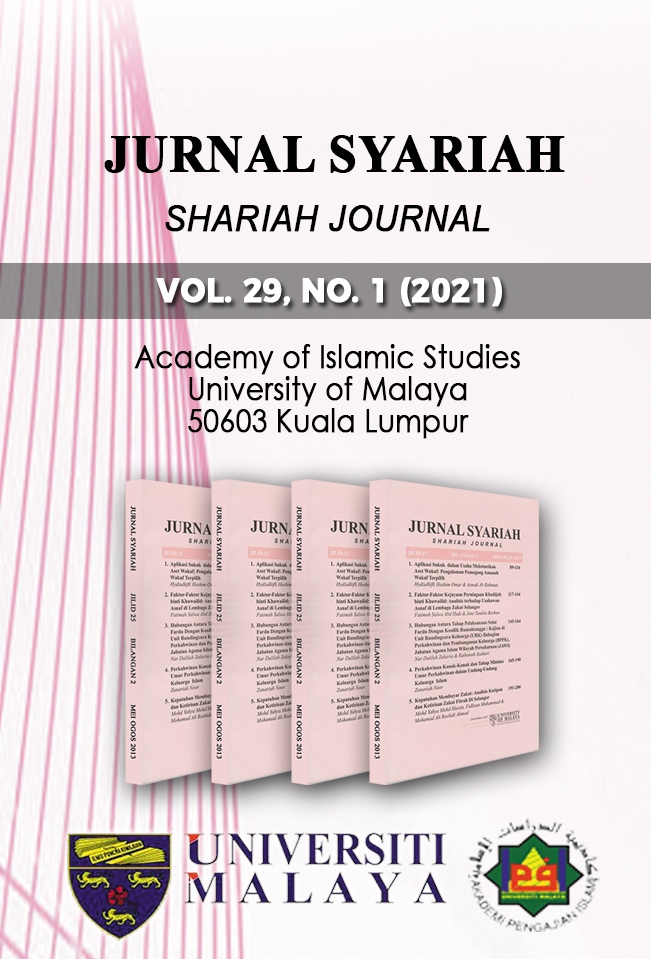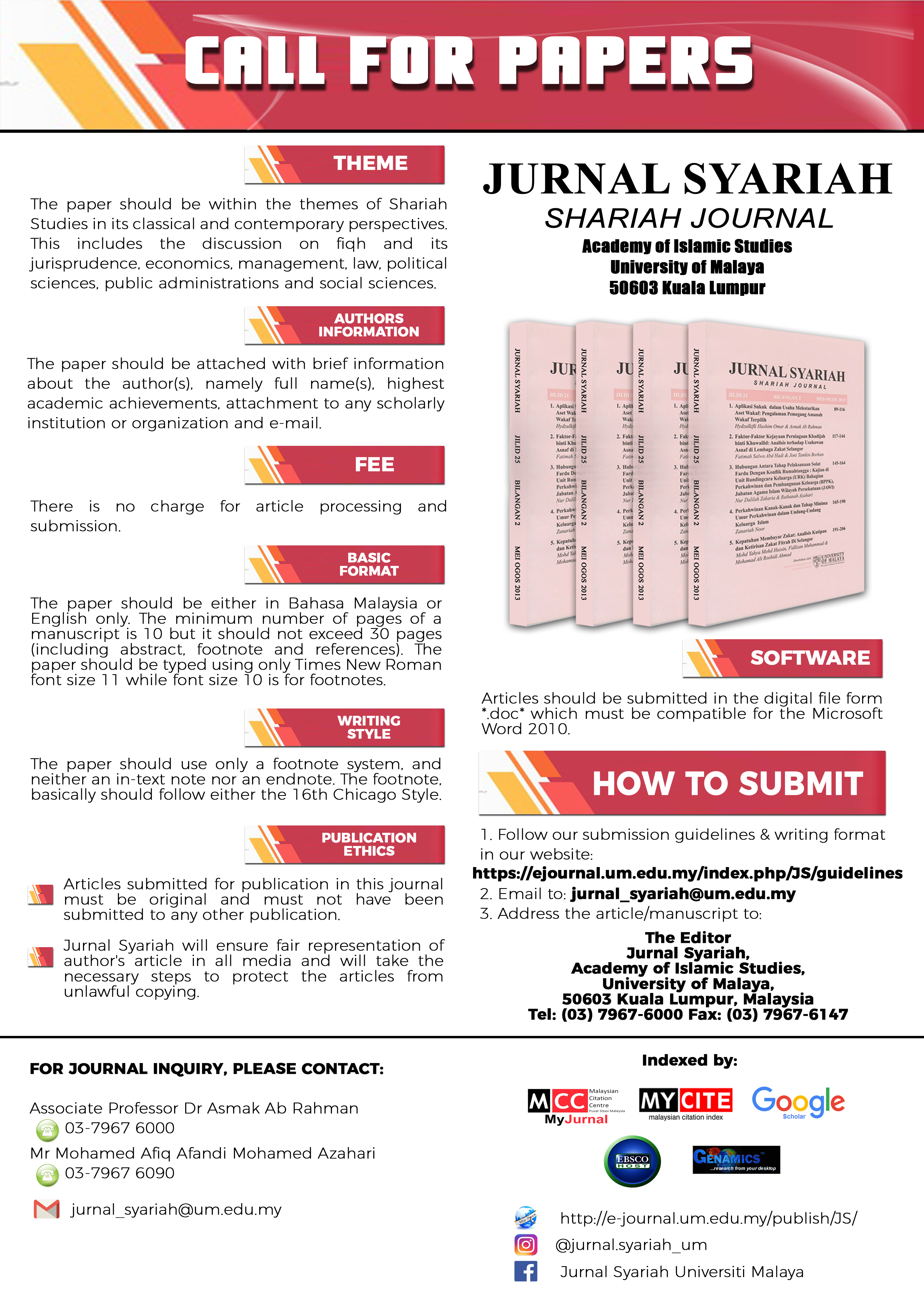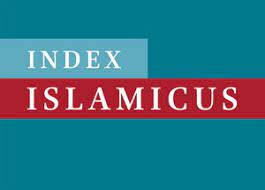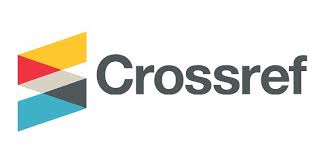PROBABILITY OF DEFAULT MEASUREMENT MODELS OF MERTON ON SHARIAH BANKS AND CONVENTIONAL BANKS IN INDONESIA FOR 2011-2017 PERIOD
DOI:
https://doi.org/10.22452/js.vol29no1.4Keywords:
Islamic banks, conventional banks, default risk, Merton’s model, systemic riskAbstract
This paper provides empirical evidence of the comparison default risk in Islamic banks and conventional banks in Indonesia over the 2011 to 2017 period. The calculation of bank default risk using a Merton Model has allowed the measure of the Distance-to-Default (DD) and Default probability (DP). This study was extended to investigate the differences of bank default risk between Islamic banks and conventional banks with the employ of T-test. The evidence shows Islamic banks as banks that are far from the Possibility of Default Risk rather than conventional banks. The T-test indicates that there are significant differences in the Probability of Default values between Islamic banks and conventional banks. These findings could be relevance to regulators in Indonesia to support the growth of Islamic, which helps in maintaining financial system stability and avoiding systemic risk.
Downloads
References
Ayomi, Sri & Bambang Hermanto, Mengukur Risiko Sistemik dan Keterkaitan Finansial Perbankan di Indonesia (Jakarta: Pusat Riset dan Edukasi Bank Sentral, Bank Indonesia, 2013).
Beck, T., Demirgüç-Kunt, A. & Merrouche, O., ‘Islamic vs. Conventional Banking: Business Model, Efficiency and Stability,’ Policy Research Working Paper, no. WPS 5446 (Washington, D.C.: World Bank Group, 2010), 1-42.
Bharath, S. T. & Shumway, T., ‘Forecasting Default with the Merton Distance to Default Model,’ The Review of Financial Studies, vol. 21/3 (2008): 1339-1369.
Black, F., Scholes, M., ‘The Pricing of Options and Corporate Liabilities,’ The Journal of Political Economy (1973): 637-654.
Boumediene, A., ‘Is Credit Risk Really Higher in Islamic Banks?’ SSRN Electronic Journal, vol. 7/3 (2010): 1-36.
Hasan, M. & Dridi, J., ‘The Effects of the Global Crisis on Islamic and Conventional Banks: A Comparative Study,’ Journal of International Commerce, Economics and Policy, vol. 2/2 (2011): 163-200.
Jessen, C. & Lando, D., ‘Robustness of Distance-to-Default,’ Journal of Banking & Finance, vol. 50 (2015): 493-505.
Kabir, Nurul, ‘Comparative Credit Risk in Islamic and Conventional Bank,’ Pacific-Basin Finance Journal, vol. 34 (2015): 327-353.
Karim, Adiwarman, Bank Islam Analisis Fiqih dan Keuangan (Jakarta: PT. Raja Grafindo Persada, 2014).
Koutsomanoli-Filippaki, A. & Mamatzakis, E., ‘Performance and Merton-type Default Risk of Listed Banks in the EU: A Panel VAR Approach,’ Journal of Banking & Finance, vol. 33/11 (2009): 2050-2061.
Larsson, Maria & Birger Nilsson, ‘Predicting the Default Probability of Companies in USA and EU During the Financial Crisis: A Study Based on the KMV™ Model,’ (Master Dissertation, Lund University, Swedia, 2010).
Machmud, Amir & Rukmana, Bank Syariah Teori, Kebijakan, dan Studi Empiris di Indonesia (Jakarta: PT. Gelora Aksara Pratama, 2010).
Masood, O., Tafri, F. H., Rahman, R. A. & Omar, N., ‘Empirical Evidence on the Risk Management Tools Practised in Islamic and Conventional Banks,’ Qualitative Research in Financial Markets, vol. 3 (2011): 86-104.
Merton, Robert C., On the Pricing of Corporate Debt: The Risk Structure on Interest Rates (New York: Wiley and American Finance Association, 1974).
Saeed, M., & Izzeldin, M., ‘Examining the Relationship between Default Risk and Efficiency in Islamic and Conventional Banks,’ Journal of Economic Behavior & Organization, vol. 132 (2016): 127-154.
Wibowo, Buddi, ‘Metode Pengukuran Probabilitas Kebangkrutan Bank dan Analisis Hubungannya dengan Diversifikasi Sumber Pendapatan: Kasus Perbankan Indonesia,’ Matrik: Jurnal Manajemen Strategi Bisnis dan Kewirausahaan, vol. 11/1 (2017): 52-66.
Wiranatakusuma, D. B. & Duasa, J., ‘Building An Early Warning Towards the Resilience of Islamic Banking in Indonesia,’ Al-Iqtishad: Jurnal Ilmu Ekonomi Syariah, vol. 9/1 (2017): 13-32.
Downloads
Published
How to Cite
Issue
Section
License

This work is licensed under a Creative Commons Attribution-NonCommercial 4.0 International License.
COPYRIGHT: All rights reserved. Not allowed to be reproduced any part of articles and contents of this journal in any form or by any way, whether electronic, mechanical, photocopying, recording or otherwise without permission in writing from the Chief Editor, Jurnal Syariah.



















